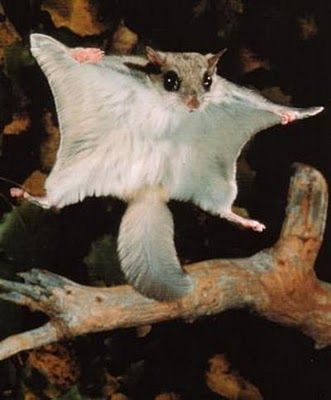Discovering the Namdapha Flying Squirrel
Flying squirrels another group of beautiful animals that are very popular among young people for their acquatic abilities. The Namdapha Flying Squirrel that is native to the Indian region provides paramount interest due to its elusive nature and habitat. This article also aims to allow the students to understand certain queries in regards to this rare species and apprised them very extensively about the peculiarities of this animal as well as the conditions that the species is under today.
Physical Characteristics
Flying squirrel has long and smooth fur, which falls on the ears and face; its body is grey on the top and reddish below, and the Namdapha flying squirrel is a great example of this species. It has reddish grizzled facial features, with a combination of silver grey colour on the crown and white on the under parts of the body. Another distinguishing characteristic is the outer skin membrane or patagial membrane, which forms a gliding surface running from the forelimbs to hind limbs, is bright orangish in color both for functional and aesthetical purposes making it easy to uniquely distinguish the flying squirrel from other squirrels .
Overview of the Namdapha Flying Squirrel
The Namdapha Flying Squirrel (Biswamoyopterus biswasi) is named after the Namdapha National Park in Arunachal Pradesh, India, where it was first discovered. This species is part of the flying squirrels family, which are known for their ability to glide through the air, thanks to a flap of skin between their legs and body. Unlike other squirrels, flying squirrels are nocturnal, meaning they are active at night.
Habitat and Ecology
Namdapha National Park, where this species was found, lies in the Eastern Himalayan range and encompasses a variety of habitats ranging from tropical and subtropical forests to alpine meadows. The park’s diverse ecosystems are traversed by the Noa Dihing River, a tributary of the mighty Brahmaputra, enhancing the region’s ecological diversity.
Conservation Challenges
Depite this, interesting as it maybe, the Namdapha flying squirrel is in danger of poaching and habitat erosion. This rarity since it’s first sighting is rather an indication of the threatened status of the species, this calls for adequate protective measures to be put in place.
Conservation Status and Efforts
Classified as critically endangered by the IUCN and protected under Schedule I of the Wildlife Protection Act of India, the Namdapha flying squirrel receives the highest level of protection in the country. Namdapha National Park, established in 1983 and designated as a Tiger Reserve, plays a crucial role in the protection of this unique squirrel along with other iconic species like the Bengal tiger, clouded leopard, and red panda.
A Biodiversity Hotspot
Namdapha National Park APark is widely accepted as the India’s treasure and also falls under the Eastern Himalaya Biodiversity Hotspot. Conservation International has been actively involved in the work of preserving the area for the future generation and the listing of this area as a future generation World Heritage site is also to retain the global interest.
What Do Namdapha Flying Squirrels Eat?
The Namdapha Flying Squirrel primarily feeds use seeds and fruitages, leaves, and insects for its food. Its active during night time enabling it feed at night hence taking advantage of the night time vegetation and covering its tracks from predators by the act of nocturnality.
Discovering the Rarest Flying Squirrel
Regarding rarity, the Namdapha Flying Squirrel is often considered one of the rarest in the world. Since its discovery in the 1980s, there have been very few sightings, leading to concerns about its population size and conservation status. The primary threats to its survival include habitat loss due to logging and agricultural expansion.
Conservation Status: What Schedule is the Namdapha Flying Squirrel In?
The Namdapha Flying Squirrel is classified under Schedule I of the Indian Wildlife (Protection) Act, 1972. This schedule affords the highest level of protection, with severe penalties for poaching or trading such animals. Despite this, the exact number of these squirrels remaining in the wild is largely unknown, making it a focus for conservation efforts in the region.
Adaptations of the Namdapha Flying Squirrel
The Namdapha Flying Squirrel has several unique adaptations that facilitate its gliding abilities. These include a patagium, a membranous structure that extends from its wrist to ankle, helping it steer and stabilize during flight. Their large eyes enhance their vision in low-light conditions, crucial for their nocturnal lifestyle.
Fun Facts: The Flying Phenomenon
- Gliding Capabilities: Namdapha Flying Squirrels can glide for distances of over 100 meters, using their tail as a rudder to control their direction.
- Nocturnal Creatures: Like most flying squirrels, they are active at night, which helps them avoid many predators and compete for food.
- Habitat: They reside in the dense forests of the Namdapha National Park, one of India’s largest protected areas.
Namdapha flying squirrel in hindi
In hindi it is called :”नमदाफा उड़ने वाली गिलहरी”
In Conclusion
The Namdapha Flying Squirrel is not just a rare species; it’s a symbol of the rich biodiversity found in the northeastern region of India. Conservation efforts are crucial to ensure that future generations may also have the opportunity to learn about and perhaps even witness this remarkable creature in its natural habitat. By protecting such unique species, we help maintain the ecological balance and the health of our planet’s forests.
